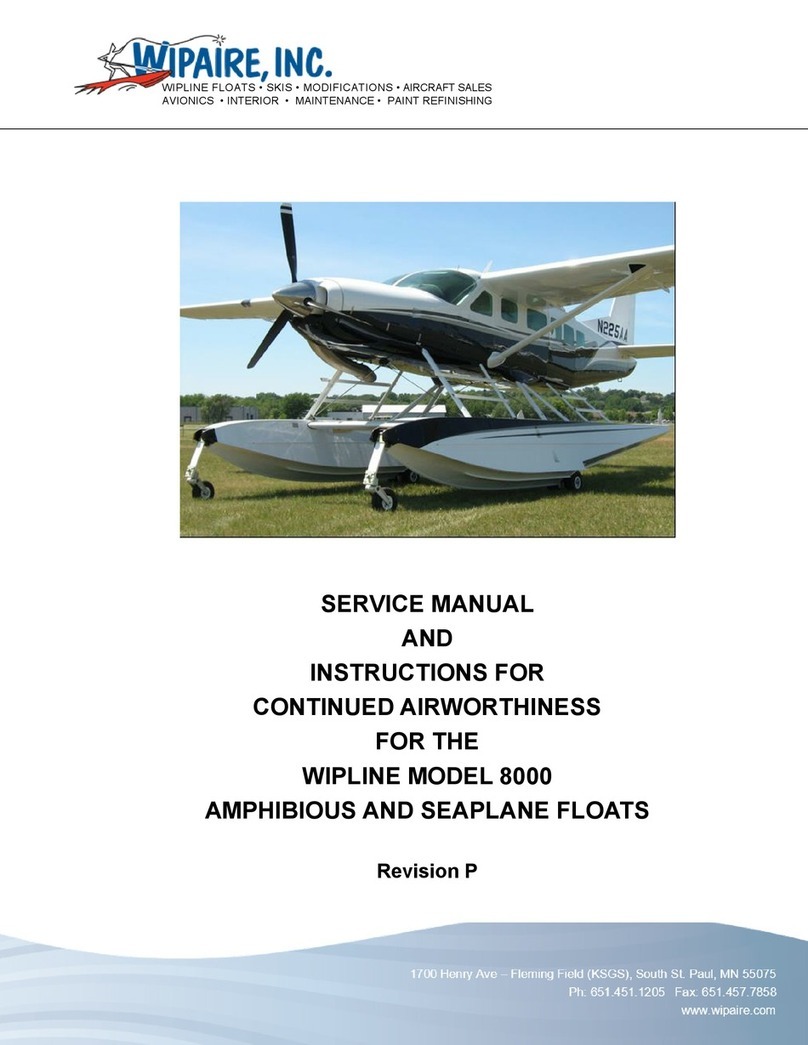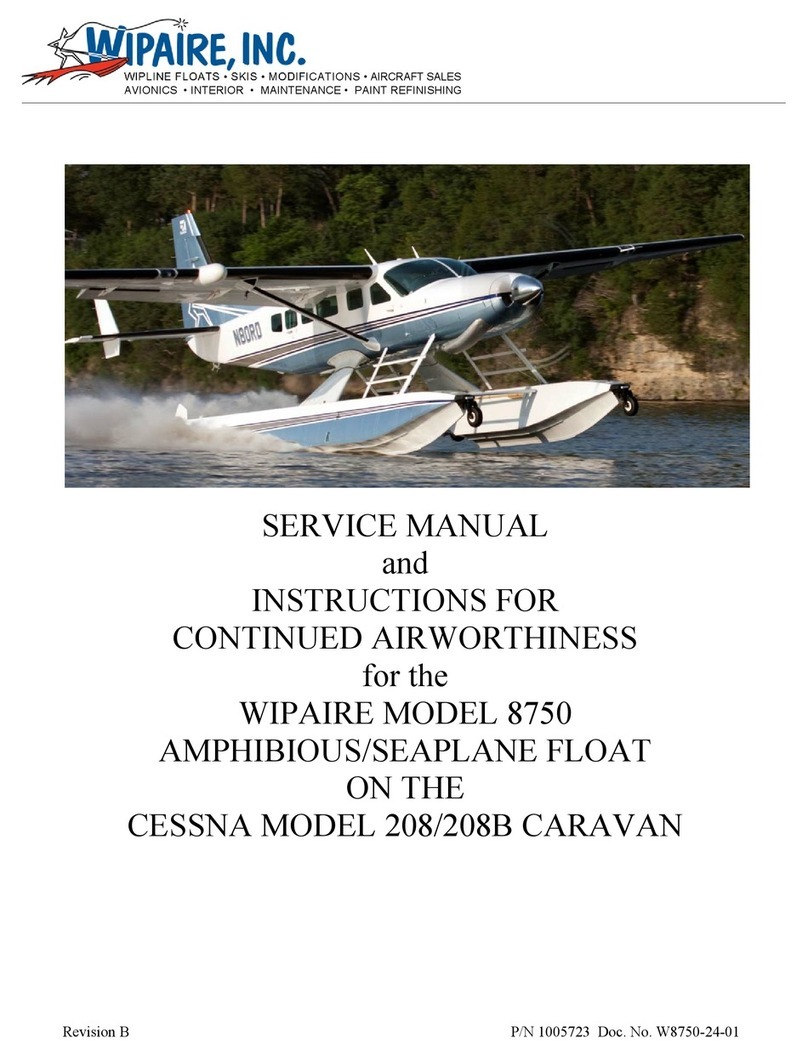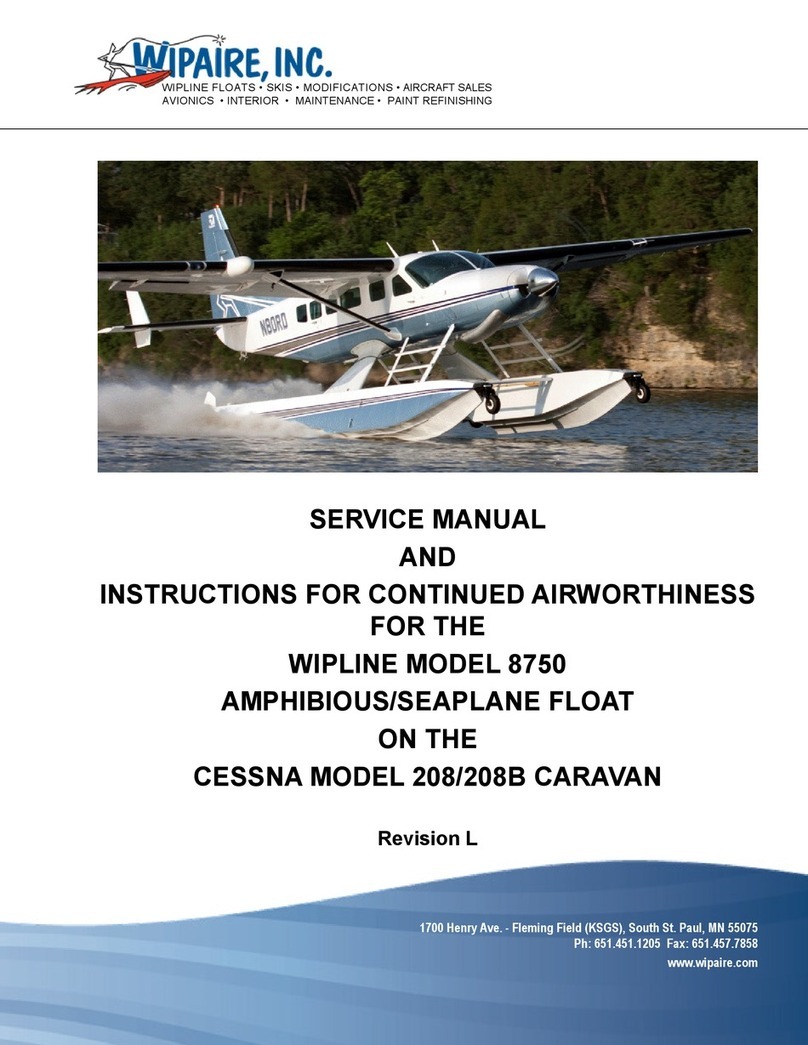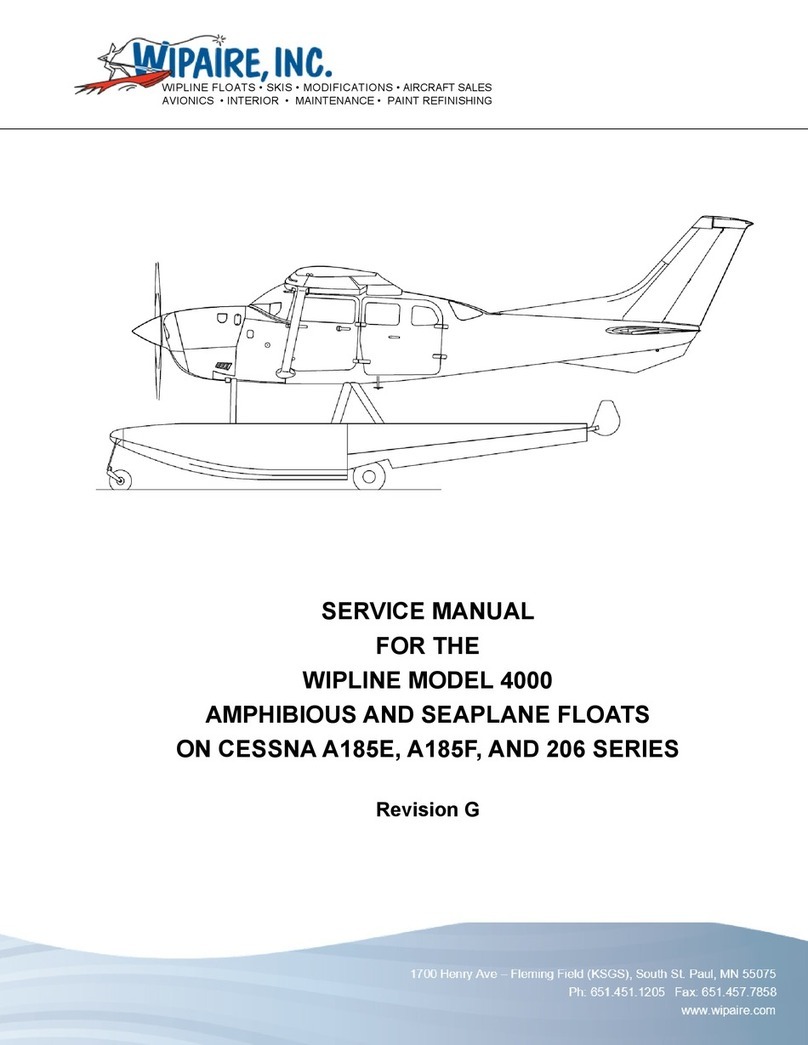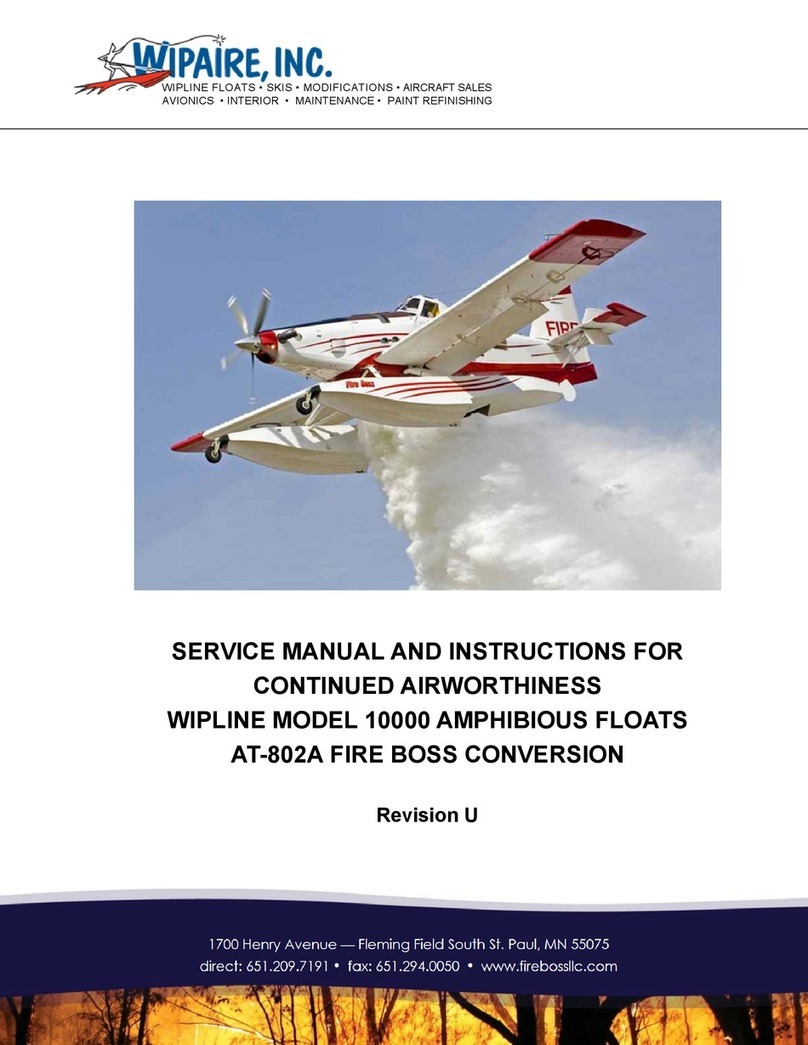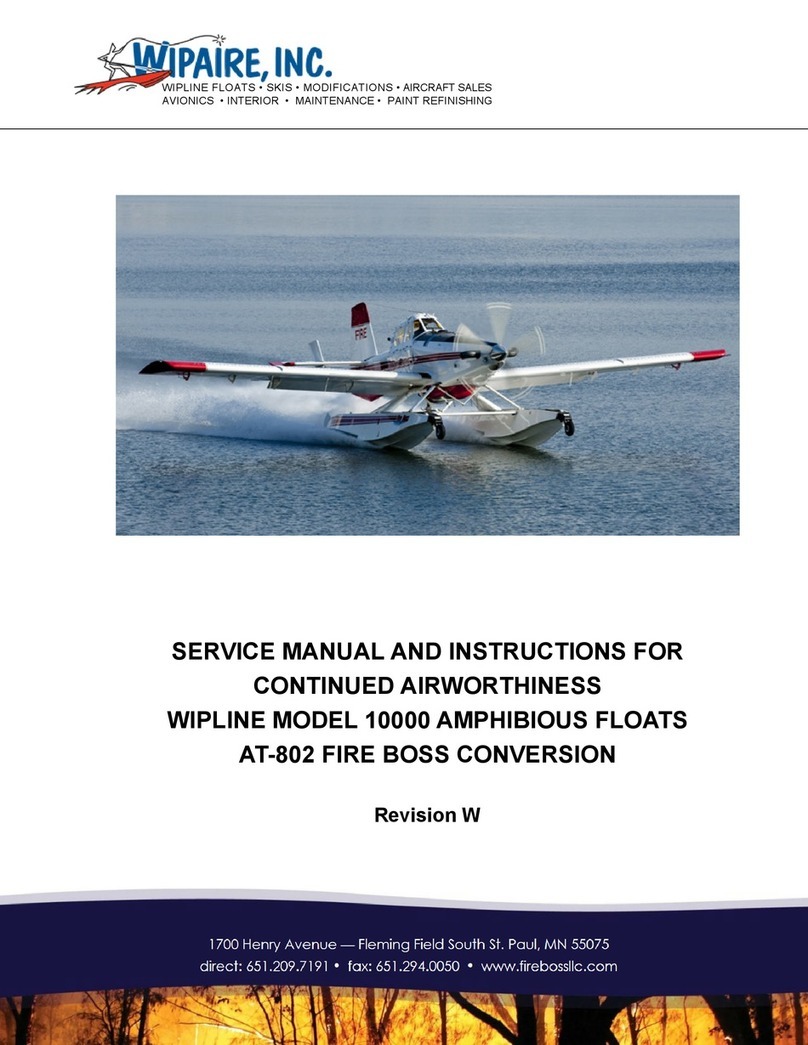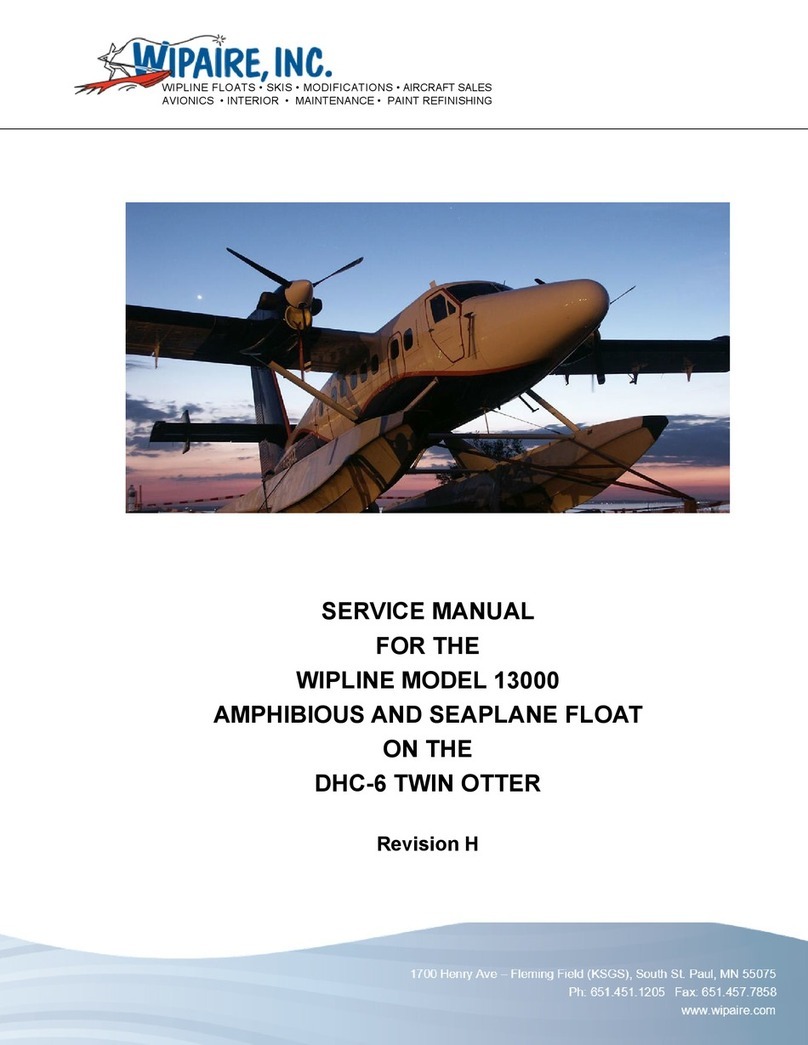
SERVICE MANUAL & ICA
WIPLINE 3730 & 3900 FLOATS
P/N 1002551 Revision K Page 3
LOG OF REVISIONS
Rev Pages Description Date
A 12 Added an inspection time limit and tolerances for the Nose Block Track wear. 4/1/2006
B 4, 14-16 Updated TOC, added new inspection checklist. 2/23/2007
C&D TOC, 6-8,
16-18 Table of contents updates, expanded corrosion prevention, added steps to insp. checklist. 10/31/2008
E All Reformat of entire document, add green grease as approved grease. 4/16/2013
F 20-21 Added Shear Torque Chart, PR 1440 C Sealant and Tef-Gel, removed Warranty Claim Form. 5/26/2015
G5, 11,
20-21
Added Dow Corning DC4, Corrosion X, and Mobil Aviation Grease SHC 100 to approved
product list. Modied torque limits section. 12/4/2015
H 8 Added reference for Structural Repair Manual part number 1008274 in introduction. 5/1/2019
J11, 13, 21,
23-25
Added information about corrosion limits. Added note about STA-Lube. Added STA-Lube to
Brake Caliper Grease. Removed inspection column from Maintenance Checklist. 8/3/2020
K All
Reformatted manual in new software. Removed Comet Industries GP-730A. Removed content
in Chapter 8 and replaced with note about SRM. Removed Figures 6 through 14 as content is
found in SRM. Added note about nose box sealant and Service Letter 224. Added sections 2.6
through 2.9
2/3/2021
View most current revision of this ICA at www.wipaire.com.
